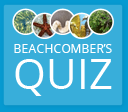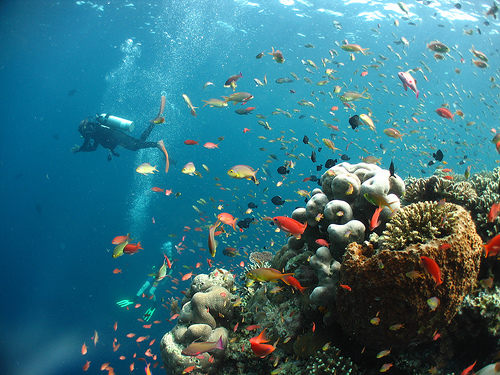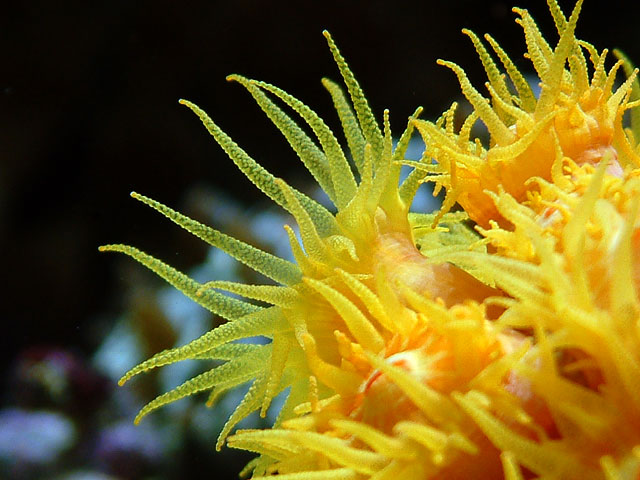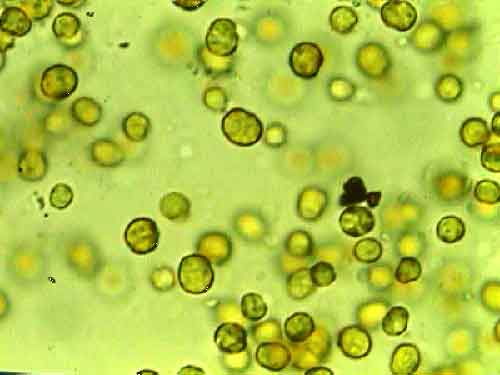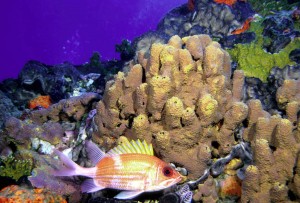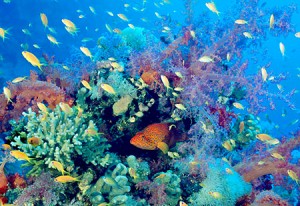- A reef is a line or ridge of coral, sand, rock, shellfish, or other structure that rises toward the surface of the ocean.
- Reefs can be artificial or natural.
- An artificial reef is a human-made underwater structure.

This sunken ship is considered an artificial reef. The tiny crevices and 3-dimensional surfaces attract fish looking to hid from predators, and the hard surface offers a perfect place for algae and other fouling plants and animals.
- Artificial reefs are often created for the purpose of enhancing marine life in areas of the ocean with very little bottom structure.
- Artificial reefs are often created from sunken ships, tires, concrete blocks, or other rubble that provides habitat for marine organisms.
- Algae, barnacles, corals, and oysters grow on artificial reef structures, providing food and increasing habitat for many marine species.
- Florida has more artificial reefs than any other state – over 2,500!
- A natural reef, such as coral reef, is any reef that is naturally occurring, and was not created by humans.
- A coral reef is an underwater ridge created by a colonial organism called coral as it builds its own protective housing. Coral reefs are enhanced by the algae within the individual coral polypsand by mineral deposits settling on it.
- Corals are marine animals that live in large, contiguous (touching) colonies. The animals living within these colonies secrete a hard, calcium carbonate housing to protect them from predators. While the extensive, beautiful coral reefs you may have snorkeled over may appear to be a single organism, they are actually conglomerations of many individual animals, referred to as polyps.
- Corals thrive in warm tropical waters.
- A type of photosynthetic (producing energy from sunlight, water, and carbon dioxide) algae called zooxanthellae live inside of coral cells. Photosynthetic algae derives its energy from the sun, and zooxanthellae shares this energy with their coral hosts in return for protection, shelter, nutrients, and carbon dioxide. Zooxanthellae are responsible for coral’s vibrant colors.
- The Gulf of Mexico is home to several coral reefs.
- The Veracruz and Yucatan Reefs are located off the coast of southeast Mexico.
- The Flower Garden Banks Reef is in the northwestern region of the Gulf of Mexico, off the coast of Texas. It is the northernmost coral reef in the United States.
- The Florida Middle Grounds Reef is located off the central west coast of Florida and is home to many stony coral species that can survive in relatively cold water.
- The warm waters near the Florida Keys Reefs provide habitat for thousands of marine organisms. Over six million people visit coral reefs in the Florida Keys’ coral reefs each year!
- Coral reefs provide shelter, breeding grounds, and nursery habitat for many ocean inhabitants. Coral reefs have one of the highest levels of biodiversity (the total number of species in an area) on the planet.
- Because coral reefs are so important to marine life, they must be protected. Marine Protected Areas (areas where natural resources are given greater protection than in the surrounding waters) have been established around most of the coral and some of the artificial reefs in the Gulf of Mexico.
- Coral reefs are fragile and sensitive to changes in water temperature and water quality. In recent years, rising ocean temperatures have caused coral bleaching.
- Coral bleaching occurs when corals expel their zooxanthellae due to environmental stress, such as high temperatures or pollutants. When zooxanthellae, who give coral their bright colors, are expelled, corals appear white and die. Dead corals will erode, depleting the rich, highly diverse ecosystems they support.
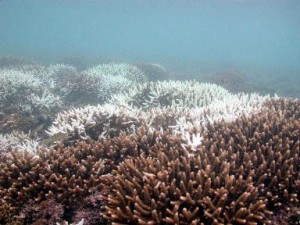
An example of coral bleaching. The white tips of the coral have died, and the lack of zooxanthellae algae in the cells causes the coral to appear white.
- We can minimize the effects of coral bleaching by reducing our energy use and avoiding the release of harmful pollutants into the environment.
Review Questions
- What is a reef?
- What is the difference between a natural reef and an artificial reef?
- What are zooxanthellae? What role do they play on coral reefs?
- What is coral bleaching and why does it occur?
Glossary
Artificial Reef: A reef created by humans.
Biodiversity: The total number of species in an area.
Coral: A living marine organism that forms colonies of polyps; provides habitat for many marine creatures.
Coral Bleaching: The process of corals expelling their zooxanthellae due to high temperatures or other environmental stressors; causes coral to appear white.
Coral Reef: An underwater ridge consisting of coral, the algae that grows on it, and various minerals.
Marine Protected Area (MPA): An area where natural resources are given greater protection than in the surrounding waters.
Natural Reef: A reef that was not created by humans.
Polyps: The individual organisms that comprise coral.
Reef: A line or ridge of coral, rocks, sand, or other structure that rises to or near the surface of the ocean.
Zooxanthellae: A type of algae that grows symbiotically within individual coral polyps; provides energy to coral through photosynthesis and is responsible for coral’s color.
